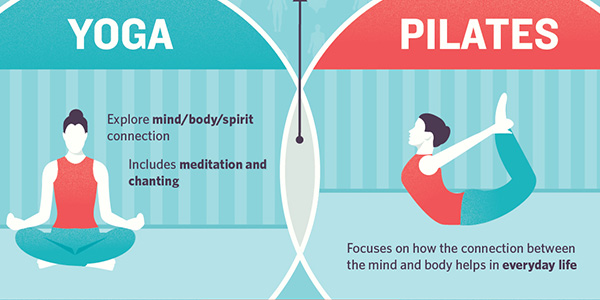When seeking to improve one’s physical fitness and mental well-being, Pilates and yoga are two popular choices. However, many people often wonder which one is better suited for their needs. In this article, we will explore the key differences between these two practices without drawing a conclusion on which one is superior.
The Origins of Pilates and Yoga
Pilates and yoga have distinct historical backgrounds that have shaped their unique approaches to exercise and personal growth.
Pilates: A Modern Exercise System
Developed in the early 20th century by Joseph Pilates, a German-born physical trainer, Pilates is a relatively modern form of exercise. The method was designed to help rehabilitate injured soldiers during World War I and has since evolved into a widely practiced system that focuses on strengthening the core muscles, improving posture and alignment, and enhancing overall flexibility.
Yoga: An Ancient Spiritual Practice
In contrast, yoga has roots dating back thousands of years to ancient India, where it began as a spiritual practice aimed at attaining enlightenment through meditation and self-discipline. Over time, yoga has developed into various styles and forms that incorporate physical postures (asanas), breathing exercises (pranayama), and mindfulness techniques.
Exercise Goals and Benefits
While both Pilates and yoga offer numerous benefits, they differ in terms of their primary objectives and target areas of improvement.
Pilates: Core Strength and Flexibility
The primary focus of Pilates is building strength in the body’s core muscles – the deep abdominal, pelvic, and back muscles that support our spine and contribute to overall stability. Pilates exercises are designed to improve posture, alignment, balance, and flexibility. It can be particularly beneficial for those recovering from sports injuries or seeking to enhance their athletic performance.
Yoga: Mind-Body Connection and Overall Health
Yoga aims to promote a more profound connection between the mind and body, with a strong emphasis on mindfulness and self-awareness. Through practicing various asanas, pranayama, and meditation, yoga practitioners seek to achieve a sense of inner peace, improved mental focus, emotional resilience, and enhanced overall well-being. Additionally, yoga offers physical benefits such as increased flexibility, muscle strength, and endurance.
Differences in Exercise Techniques
The way Pilates and yoga exercises are performed also differs significantly, which may impact your preference for one over the other.
Pilates: Controlled, Precise Movements
Pilates exercises involve slow, controlled movements that require intense concentration and focus on proper form. While some workouts use specialized equipment like the Reformer, Cadillac, or Wunda Chair, many Pilates exercises can be done using just a mat. The emphasis is on performing each movement correctly, rather than on achieving a specific number of repetitions or working at a fast pace.
Yoga: Flowing Sequences and Static Holds
In contrast, yoga often involves moving through flowing sequences of postures (called vinyasas) and holding static poses for varying lengths of time. Breathing plays a crucial role in yoga practice, with practitioners encouraged to synchronize breath with movement. Many yoga styles exist, ranging from gentle, restorative practices like Yin Yoga to more challenging, vigorous ones like Ashtanga or Vinyasa.
Physical Intensity and Difficulty
While both Pilates and yoga can be adapted for various fitness levels, they generally differ in terms of physical intensity and perceived difficulty.
Pilates: Moderate to Intense Workouts
Pilates workouts often involve engaging multiple muscle groups simultaneously and can be quite challenging, particularly for the core muscles. Exercises may require a significant amount of strength and control, making some forms of Pilates more suitable for intermediate or advanced exercisers. However, beginner-friendly options and modifications are also available for those new to the practice.
Yoga: Diverse Range of Intensities
The intensity of a yoga session can vary greatly depending on the style and instructor. Some classes focus on gentle stretching and relaxation, while others provide a more intense, sweat-inducing workout. This diversity allows individuals at any fitness level to find a yoga practice that suits their needs and preferences.
Which One is Right For You?
Ultimately, the choice between Pilates and yoga comes down to personal preference and individual goals. It’s worth trying out both practices to determine which one resonates most with your own fitness journey and well-being needs.
- Pilates may be a better fit if:
- You want to focus on building core strength and improving posture
- You prefer structured, precise movements over flowing sequences
- You’re recovering from an injury or looking to enhance athletic performance
- Yoga might be more suited to you if:
- You’re seeking a mind-body practice that incorporates mindfulness and meditation
- You enjoy flowing movements and a focus on breath
- You want a diverse range of intensity levels and styles to choose from
Ultimately, both Pilates and yoga can provide significant benefits to your physical health and mental well-being. By considering your unique goals and preferences, you can make an informed decision about which practice is the best fit for you.



Comments